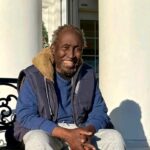Caged African man: Why a zoo took 114 years to apologise
Published on August 28, 2020 at 5:56 AM by Face of Malawi
Ota Benga was kidnapped from what is now the Democratic Republic of Congo in 1904 and taken to the US to be exhibited. Journalist Pamela Newkirk, who has written extensively about the subject, looks at the attempts over the decades to cover up what happened to him.
More than a century after it drew international headlines for exhibiting a young African man in the monkey house, the Bronx Zoo in New York has finally expressed regret.
The Wildlife Conservation Society’s apology for its 1906 exhibition of Ota Benga, a native of Congo, comes in the wake of global protests prompted by the videotaped police killing of George Floyd that again shone a bright light on racism in the United States.
During a national moment of reckoning, Cristian Samper, the Wildlife Conservation Society’s president and CEO, said it was important “to reflect on WCS’s own history, and the persistence of racism in our institution”.
But the belated apology follows years of stonewalling.
‘He was a zoo employee’
Instead of capitalising on the episode as a teachable moment, the Wildlife Conservation Society engaged in a century-long cover-up during which it actively perpetuated or failed to correct misleading stories about what had actually occurred.
As early as 1906 a letter in the zoo archives reveals that officials, in the wake of growing criticism, discussed concocting a story that Ota Benga had actually been a zoo employee. Remarkably, for decades, the ruse worked.
Who was Ota Benga?
- Captured in March 1904 by US trader Samuel Verner from what was then Belgian Congo. His age is not known, he may have been 12 or 13
- Taken by ship to New Orleans to be shown later that year at World’s Fair in St Louis with eight other young males
- The fair continued into the winter months where the group was kept without adequate clothing or shelter
- In September 1906 he was exhibited for 20 days in New York’s Bronx Zoo, attracting huge crowds
- Outrage from Christian ministers ended his incarceration and he was moved to New York’s Howard Coloured Orphan Asylum run by African American Reverend James H Gordon
- In January 1910 he went to live at the Lynchburg Theological Seminary and College for black students in Virginia
- There he taught neighbourhood boys how to hunt and fish and told stories of his adventures back home
- He later reportedly became depressed with his longing for home and in March 1916 shot himself with a gun he had hidden. He was thought to be aged around 25.
Source: BBC


